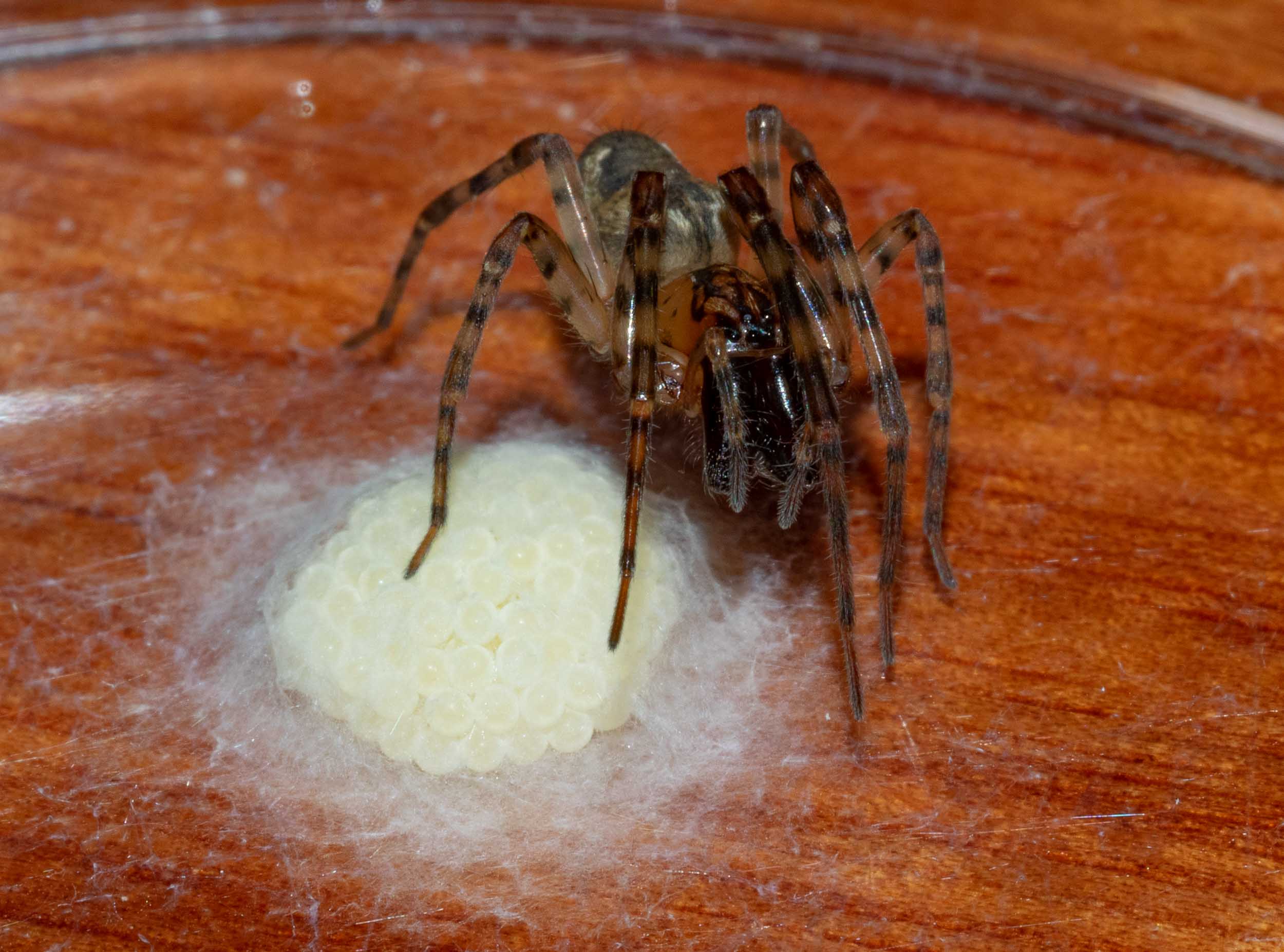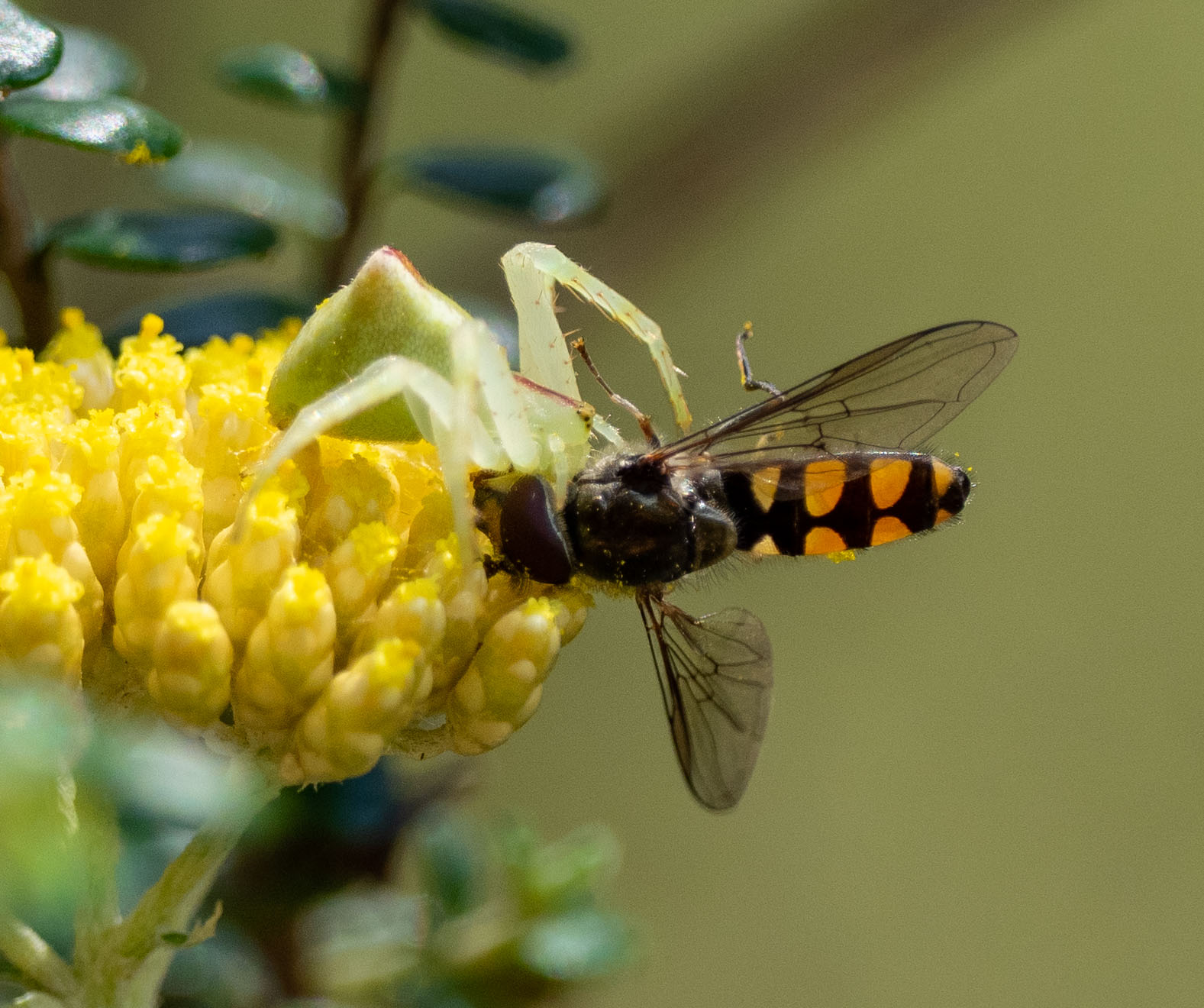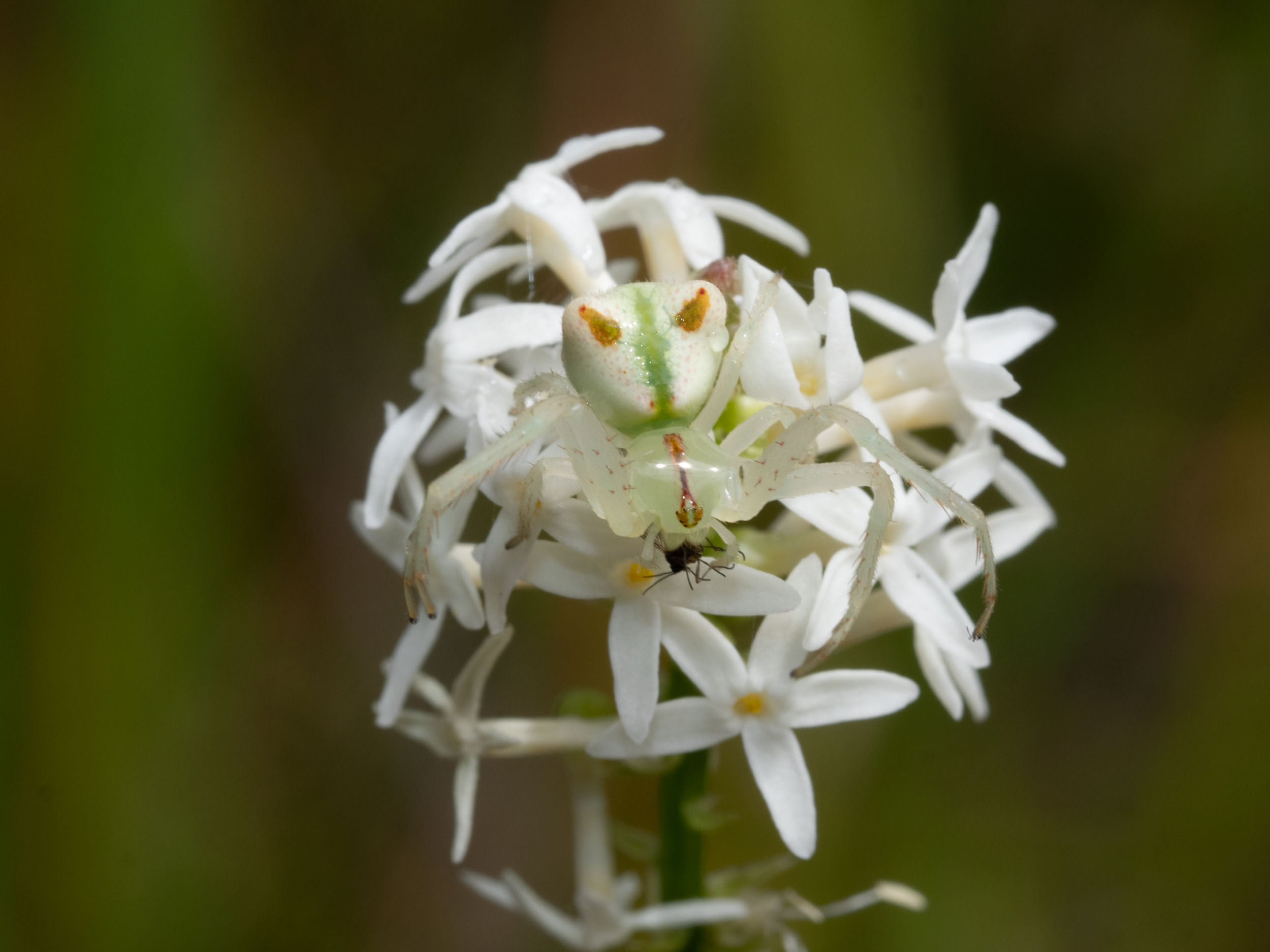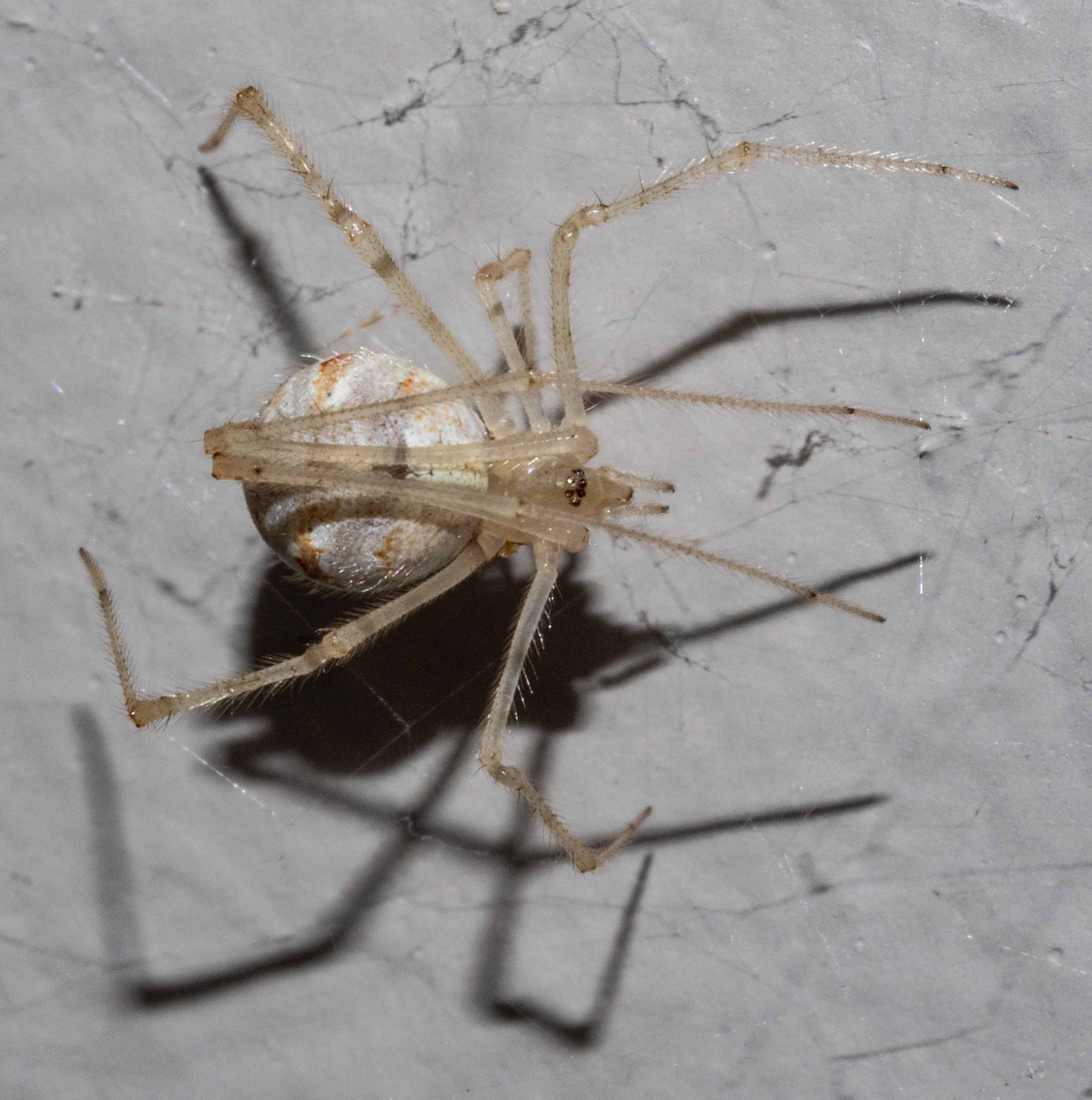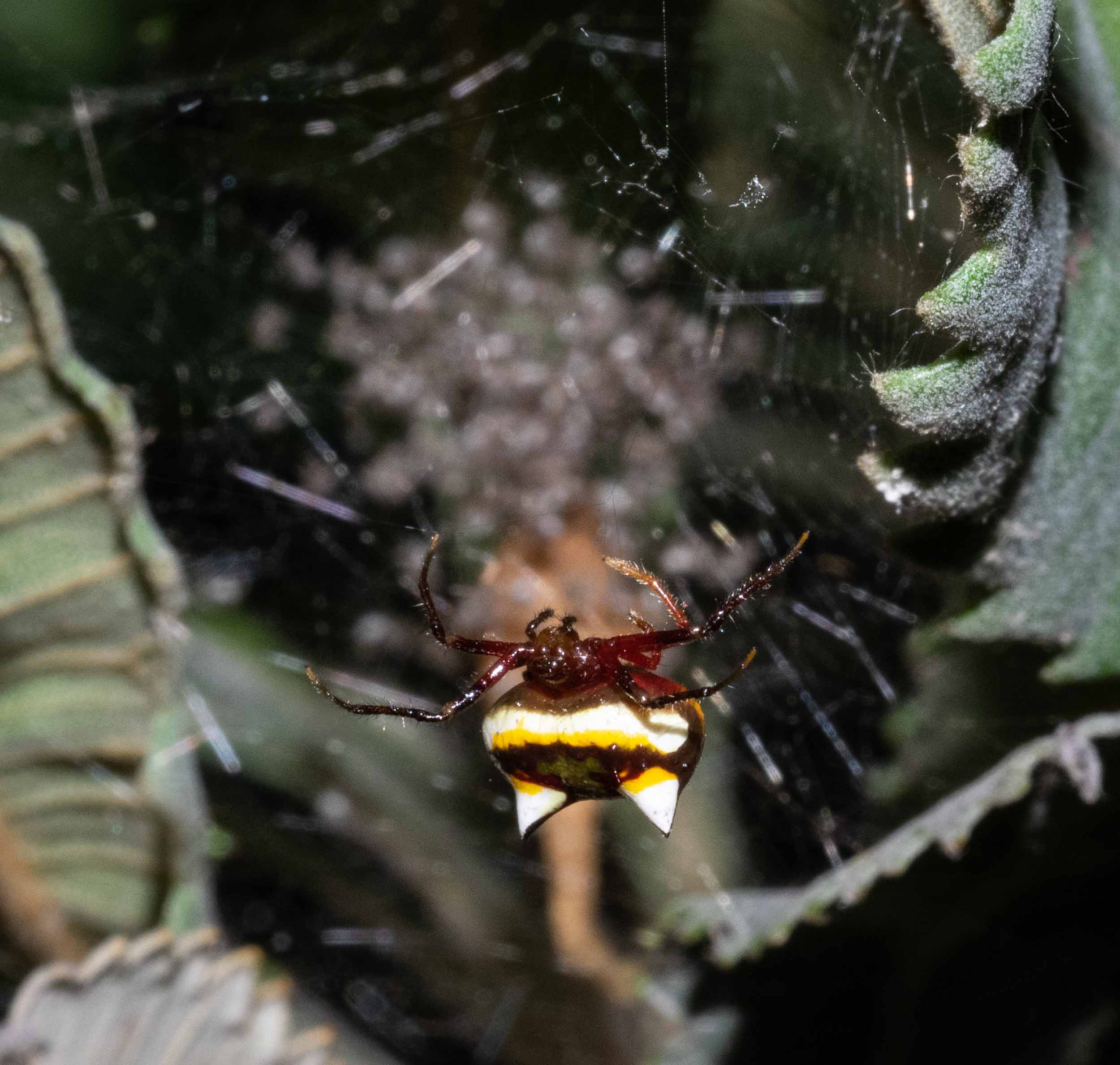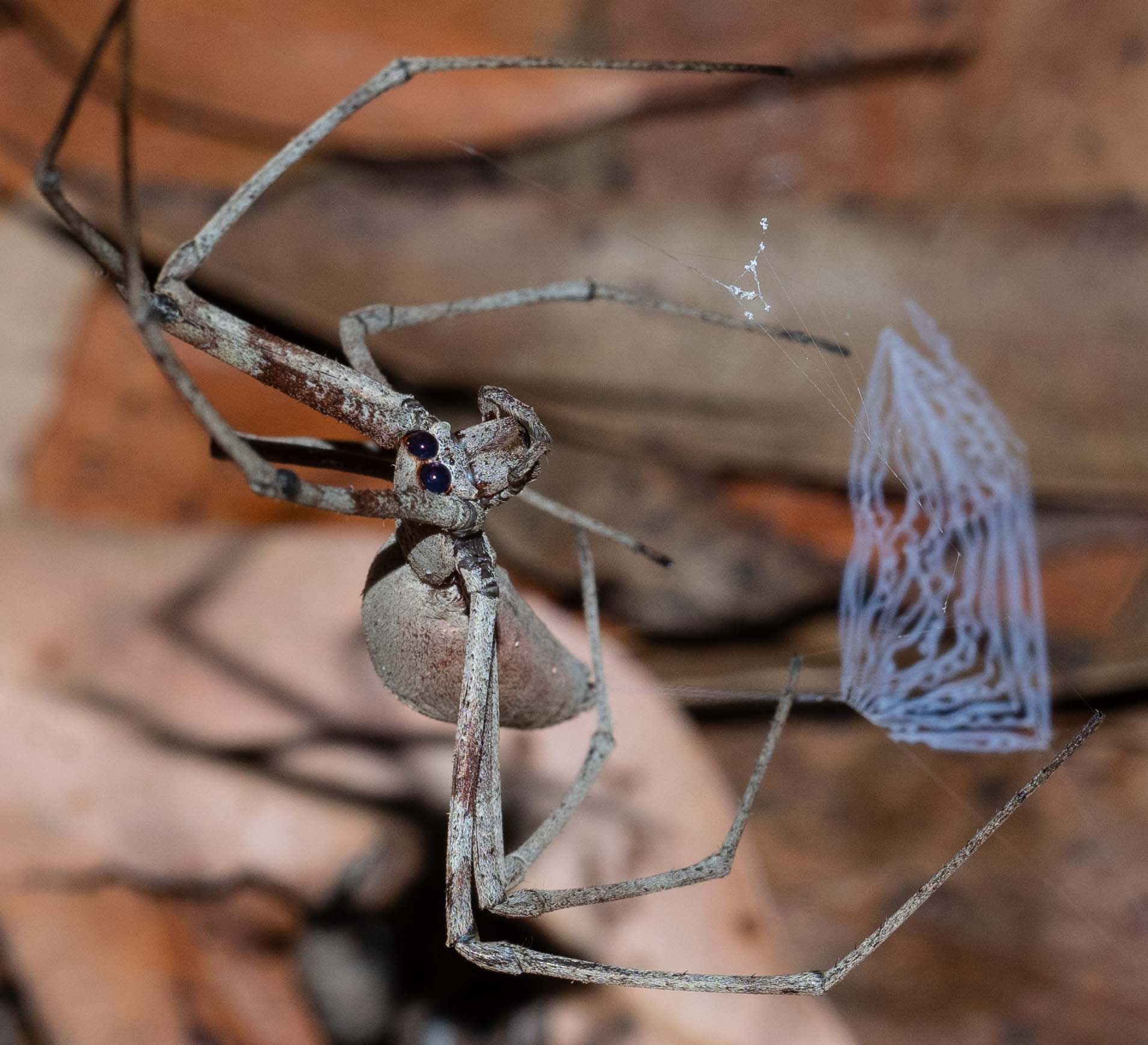A mysterious mother
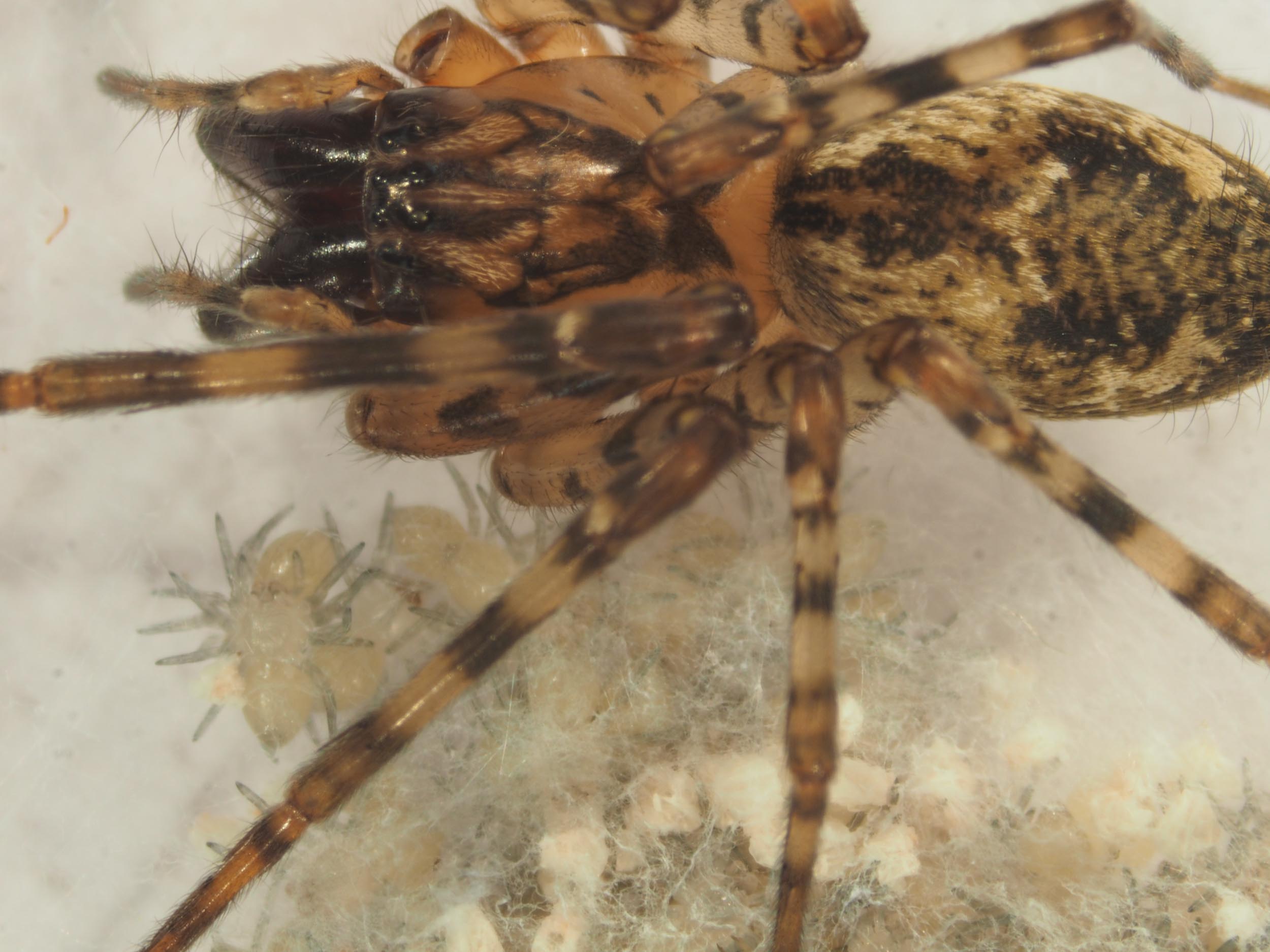
When I collected this spider last month, I really didn’t expect to keep her very long. She is now a proud(?) mum! Here’s the story …
We needed some live spiders for a workshop we were holding on 10th August. I found her on the back wall of the house just in time to include her in the display. The plan was to release her the following day. But when I lifted the lid of her dish the next morning it was clear that she was not going anywhere.
She has no name
Her identity is still a mystery. Initially I thought she was a Sac Spider (family Clubionidae) based on her large, dark chelicerae. Nope. We now have it on good authority that she’s a desid spider (family Desidae) … and probably an undescribed species.
This is a little frustrating. Normally knowing the family is enough to give a hint as to the spider’s biology. Not this time. Desidae is a grab-bag of all sorts of spiders, the taxonomy is in a state of flux. So all we really know about our spider is what we’ve observed.
A watchful mother
Many spiders, across a range of families, guard their eggs as they develop.
Some spiders build egg cases to withstand exposed conditions. The eggs are protected from desiccation and damage by a tough outer layer of silk. In contrast, eggs laid in more sheltered, humid hideouts may have a more loosely woven egg case.
Our spider constructed a very simple cocoon. The weave was open, her eggs clearly visible. Surrounding it in all directions was a sparse web, no doubt allowing her to stay in touch from her nearby retreat.
18th Aug: motionless but on guard
She would sit motionless, day after day, week upon week. Yet she was clearly on guard. If I disturbed the dish she would reach out a leg to touch the eggs or even move to stand astride the entire cocoon.
40 days from egg to spiderling
Changes in the opacity of the eggs reassured us that they were developing. Paul resisted the temptation to steal a couple for a closer look. Just. Research into spider development is in his past. Just.
And this week they hatched! There must be about 80, and it seems that all the eggs developed successfully.
For the first few days they were tiny, creamy-white nymphs. Occasional waves of motion would pass across the mass, like cheering in a football crowd, but otherwise they were quite still.
After a few more days they changed colour and started to spread out. Still not going far, and remaining together in one patch of web.
Only today have they started to wander further afield. Nearly time to let them go.
2 October update
The spiderlings are growing apace (see photo with Mum for a size reference) and are colouring up. They’ve also dispersed further. We assume they’re still being nourished by the yolk they carried over from the egg. Soon they’ll have to start catching prey.
Breaking the long fast
I’d read that guarding mothers rarely feed and that spiders can survive extended periods between meals, so we didn’t offer her any food while she was on guard. She could have left the dish at any time in search of a meal. She didn’t. At times I wondered if she had died, but she was simply waiting.
Once the egg case was a seething mass of legs, she started to become more animated. It was time to see if she might be interested in a meal. Two days and three moths later, I imagine she’s feeling a good deal more energetic.
Yet I wonder why she’s eating. It’s unlikely that she’ll live long now. Most araneomorph spiders breed just once, then die. Perhaps she has a little more left to give her hungry brood.
It could be that by simply staying alive, on guard, she’s helping ensure her babies’ future. Less likely, she may actively feed them. Some spiders do regurgitate baby food but it is exceedingly rare. A third possibility is that she’ll make the ultimate sacrifice and allow her young to devour her body as she dies. Effective recycling indeed.
I’m tempted to watch for a few days more, before setting them all free.
And, while I wait, I’ll keep them supplied with a smorgasbord of moths and flies. The only downside of keeping non-vegan pets!
November 2011: Update
Thanks to Ethan Yeoman and iNaturalist, we can now give this spider and her babies a name. Family Desidae, Genus Namandia. I have not yet been able to access the original description nor any other information about Namandia, but it is simply nice to have a name.





